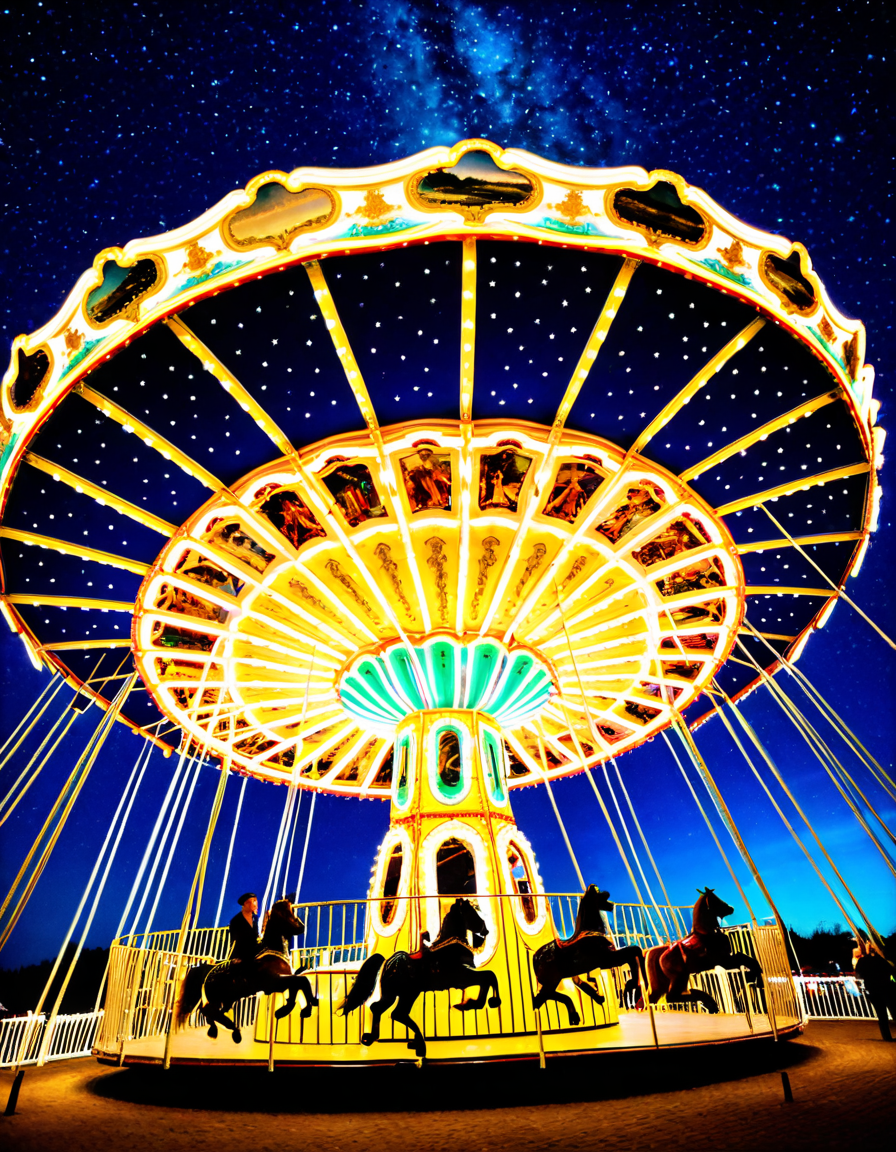Ah, vertigo! For many, the mere thought of heights can trigger a fluttery sensation in the stomach, a sign that the thrill of falling—the fear—has taken root. But, let’s not kid ourselves: vertigo is more than just a fear of heights. It’s a gripping psychological sensation that can paralyze even the bravest adventurer. In this article, we’ll dive deep into the world of vertigo, blending insights from cinema, psychology, and the social sciences to understand this riveting experience.

Understanding Vertigo: The Intricacies of Fear and Height
When we talk about vertigo, we’re not just dipping our toes into simple acrophobia—the fear of heights. This experience is layered, blending various psychological and physiological threads. Imagine standing on a high balcony, and the sheer drop below sends a wave of dizziness crashing over you. That’s vertigo kicking in, and it’s often fueled by sensory overload or, in some cases, a medical condition known as vestibular disorders.
According to the Journal of Anxiety Disorders, about 5% of adults wrestle with deep-seated anxiety related to heights. These individuals can find themselves immobilized by the very thought of ascending a hill or stepping onto a tall building’s ledge. By exploring the sensory and psychological elements that lead to this unsettling sensation, we gain richer insights into how vertigo shapes our perceptions.
The journey through understanding vertigo is also a passage into our innermost fears. Is it the height that terrifies us, or is it the fear of losing control? The internal monologue we have while confronting our fears often unravels our relationship with vertigo and tells a story as compelling as any blockbuster.

The Top 5 Iconic Film Scenes that Capture the Essence of Vertigo
Ah, cinema! Few mediums can capture the essence of vertigo quite like the silver screen. Directors paint a story of fear that resonates deeply with viewers. Here are five iconic film scenes where vertigo is more than just a fleeting fear; it’s a narrative device that heightens tension and emotion:
This is the quintessential film that first branded “vertigo” as a household term. Through the lens of a former San Francisco detective haunted by his past and feelings of acrophobia, Hitch crafted a narrative that dances fearfully around psychological trauma. The famed dolly zoom effect expertly immerses audiences into the dizzying world of the protagonist, turning height into a symbol of instability.
In this gripping scene, the Joker dangles a hostage over the edge of a skyscraper. The contrasting views of Gotham’s jagged skyline evoke sheer terror. Nolan’s direction pulls viewers to the edge of their seats, capturing the heart-pounding feeling one gets in the face of vertigo with every snippet of dialogue and visual cue.
Based on a true story, this film beautifully illustrates isolation, fear, and the heights of desperation faced by Aron Ralston. As he finds himself precariously perched above breathtaking cliffs, viewers experience his vertigo alongside him. The film’s vibrant landscape cinematography evokes visceral emotions that translate fear into a raw, human story.
Picture this: Doctor Strange navigating a battle scene on Titan, with incredible heights looming over him. The action, combined with superhuman abilities and urgent stakes, heightens the sense of vertigo. It’s a reminder that fear and thrill can coexist, even among gods and superheroes— (yes, folks, even they have their moments!)
This documentary transcends film as it captures climber Alex Honnold’s death-defying ascent of El Capitan without ropes. The breathtaking shots serve to encapsulate vertigo in the purest form. Viewers feel his torment, fear, and stark realization of heights, pulling us into an adrenaline-soaked journey that asks whether one can truly conquer vertigo.
Real-Life Experiences: Overcoming Vertigo
While the thrillers we love push the limits of fear, real-life stories amplify the human connection to vertigo. Many individuals bravely face acrophobia through methods like exposure therapy. This psychological technique slowly acclimatizes sufferers to their fears by introducing them to heights at a gradual pace.
Take, for instance, the research of clinical psychologist Dr. David F. Tolin, who uses virtual reality to help patients confront their fears in a controlled environment. Imagine strapping on a VR headset and “standing” at the edge of a digital cliff—an innovative approach that’s bridging the gap between therapy and technology.
The journey doesn’t stop here; it’s personal. Hearing accounts from those who have overcome such fears can be incredibly inspiring. Many find that facing their vertigo leads to empowering experiences and a newfound appreciation for life—climbing heights, both literally and metaphorically.
The Science Behind Vertigo: Physiological and Psychological Mechanisms
In the arena of scientific inquiry, vertigo presents a fascinating interplay between sensory inputs and cognitive interpretations. Our vestibular system, nestled within the inner ear, maintains balance and orientation. When it misfires, those dizzy sensations arrive uninvited.
Research from Frontiers in Psychology explains how our sensory interpretations can become skewed—like a funhouse mirror affecting our sense of reality. Cognitive-behavioral approaches also show promise. Renowned psychiatrist Aaron T. Beck’s cognitive restructuring techniques challenge negative thought patterns, helping patients change how they perceive heights.
Understanding the science behind vertigo not only demystifies the experience but underscores the importance of mental health in navigating such fears. This duality of mind and body begs the question: How much of vertigo can be overcome?
The Cultural Impact of Vertigo in Society
Vertigo transcends film and therapy; it permeates art, literature, and beyond. Take Edvard Munch’s painting “The Scream,” often seen as a poignant reflection of existential dread, a prime candidate for the vertiginous feelings we encounter. The spirals in the artwork can easily remind us of our own spirals of anxiety when confronted with heights.
Literature, too, has explored these themes. Authors like Ernest Hemingway examined fear in their stories, especially in high-stakes situations where characters face life-altering decisions. The confluence of fear, height, and the human condition weaves a narrative that resonates across time and media forms.
Vertigo’s cultural reach speaks to our collective narrative, making it an inescapable part of society’s discourse. This intertwining of life experiences within creative outlets enriches our understanding of vertigo, inviting us to confront our own towering fears.
A New Perspective on Heightened Fears
At the end of the day, exploring vertigo offers up a tapestry of fears, experiences, and stories that bind us all together. Whether it’s through thrillers that test our bravery or the personal battles individuals face daily, we learn that vertigo serves as more than just a sensation—it’s an invitation to engage with our deepest fears.
As we continue to navigate the dimensions of vertigo in film, psychology, and culture, we uncover a layered narrative about heights and what they signify. It captivates us in movies, challenges us to confront our phobias, and ultimately helps us redefine our relationships with fear itself. So, can you feel the vertigo in your heart, or is it simply the thrill of the cinematic journey calling? Let’s embrace it all—after all, every height is just another story waiting to unfold.
Vertigo: Thrilling Exploration of Fear and Height
The Fear Factor in Film
Did you know that Alfred Hitchcock’s Vertigo isn’t just a movie about fear of heights, but also dives deep into themes of obsession? The film’s psychological layers, from Scottie’s fear to his fixation on Madeleine, mirror struggles in real life many face regarding their emotions. It’s fascinating to think about how fear makes us feel vulnerable, much like how lighting or sound can enhance tension in movies like Smile.
The scene where Scottie hangs from a rooftop perfectly captures that dizzying sensation of vertigo, making audiences squirm in their seats. Speaking of captivating performances, the chemistry between the star-studded Wonder Woman cast showcases how dynamic interactions can also elevate a film’s edge-of-your-seat experience. Meanwhile, lesser-known actors like DJ Qualls remind us that it takes a range of talents to create compelling narratives that hold our attention.
Language and Meaning
Interestingly, the word “vertigo” comes from Latin, meaning “to turn” or “to spin.” This ties in well with the film’s themes as Scottie’s mental state unravels throughout the plot. A bit of trivia you might not know: the modern understanding of vertigo relates to sensations triggered by dizzy heights, much like encountering a dragonfly in Spanish—a( creature often associated with the fleeting and ephemeral in life. The contrasts in both their flights can hint at how precarious our own battles with fear can feel.
Through its psychological depth, Vertigo holds a mirror to living with anxiety and fear. This aligns with the struggles depicted in powerful films like Red, which showcases characters overcoming their fears amidst chaos. Just like a nail-biting thriller, both films craft narratives that urge you to confront deep-seated emotions, pushing you to explore beyond mere entertainment.
Intriguing Connections
Moreover, did you know the term “sicario” means “hitman” in Spanish? Understanding this can deepen your appreciation for films with such killer plots as Sicario, where fear and action intertwine dramatically. Both Vertigo and Sicario evoke intense emotions that linger long after the credits roll, reminding us of the fears that frame our lives.
Lastly, theatrical adaptations like macbeth explore similar themes of madness and ambition, revealing how fear can manifest in tragic ways. Just like Scottie’s downfall are echoes of ambition gone awry, Shakespeare’s characters often tumble down similar spirals. These connections across cinema not only entertain but also challenge us to consider our own heights—and fears—in daily life. So, the next time you find yourself battling that dizzy feeling, think of how film captures these very truths about our existence!





